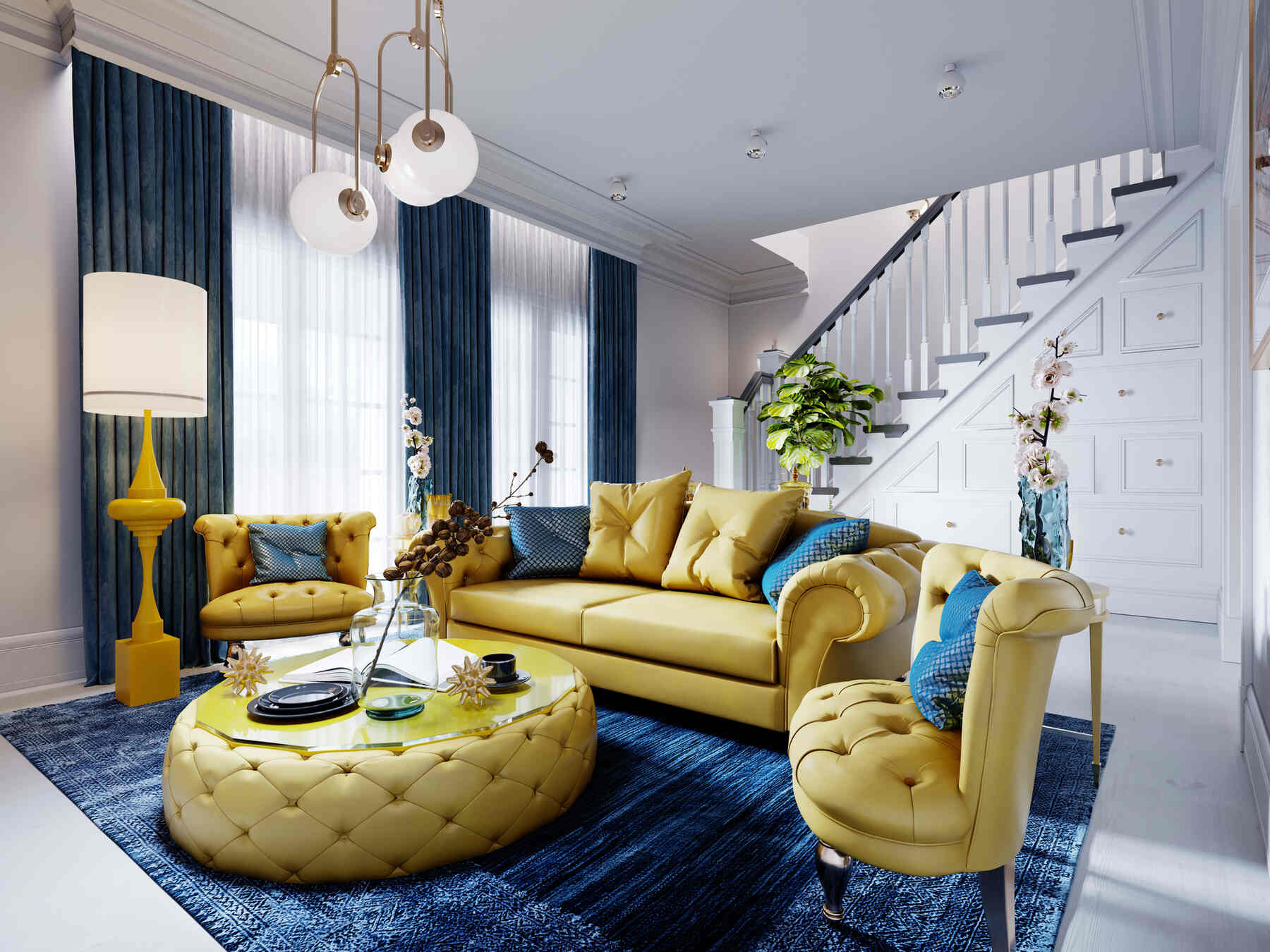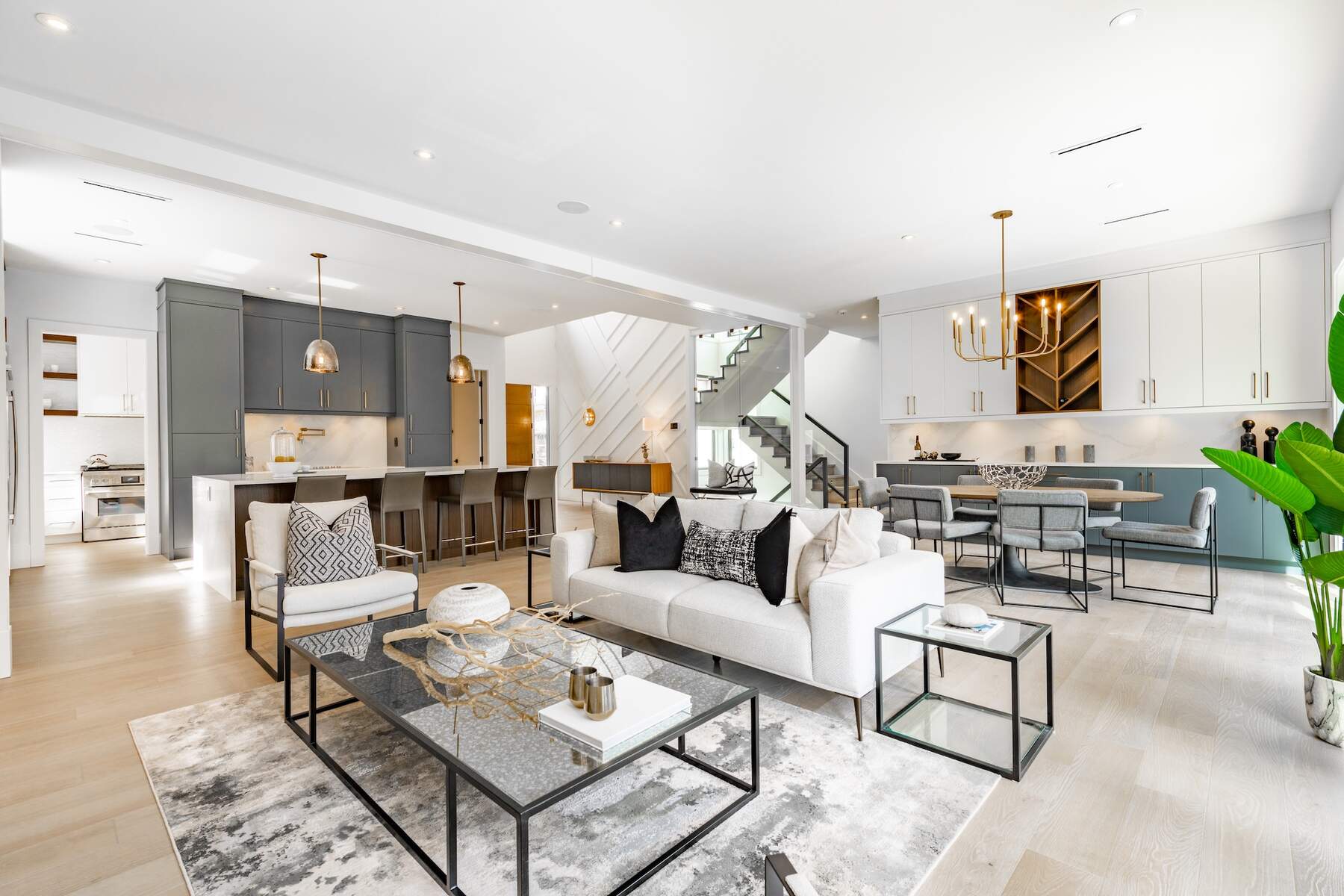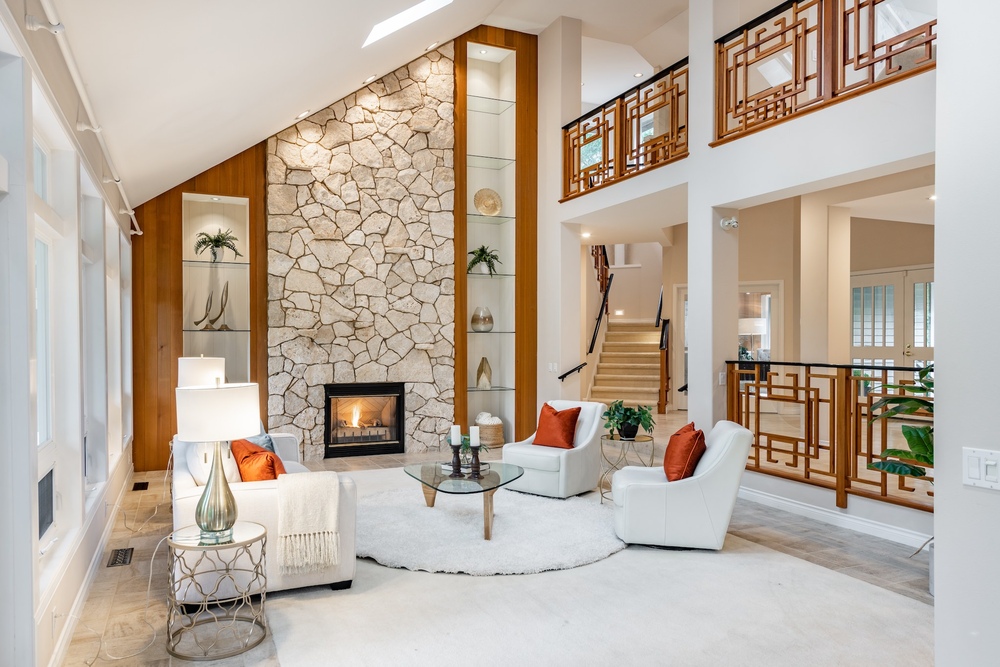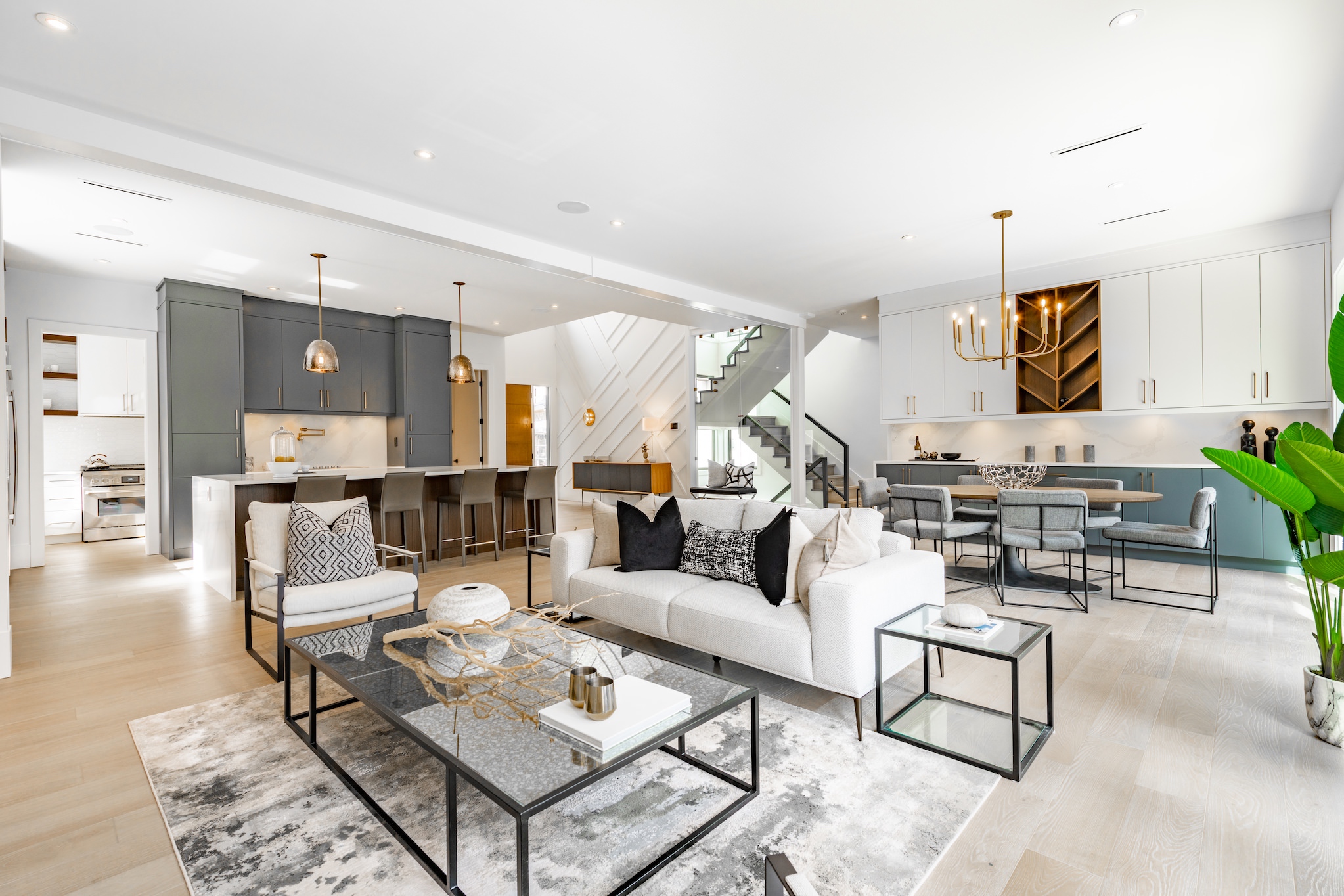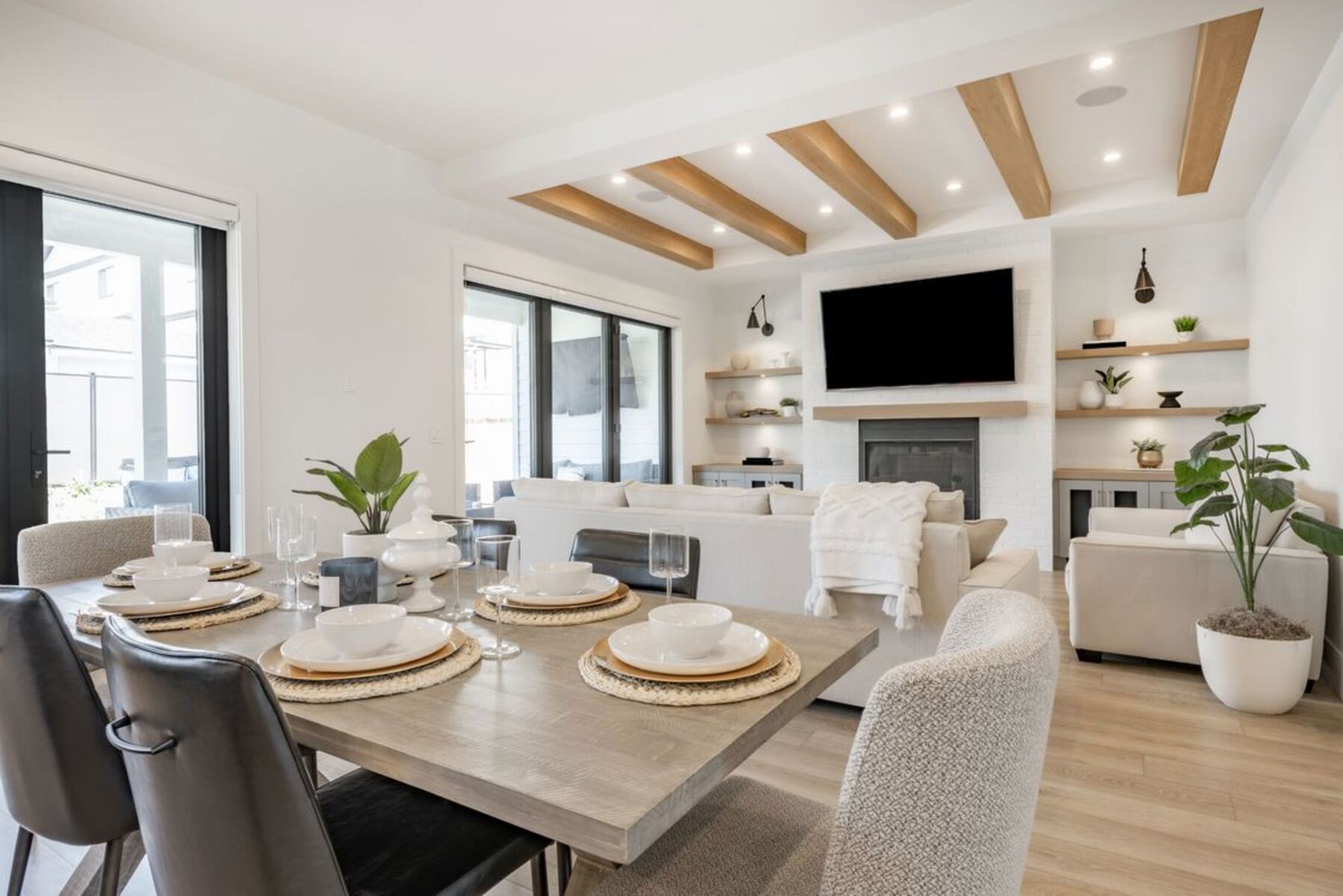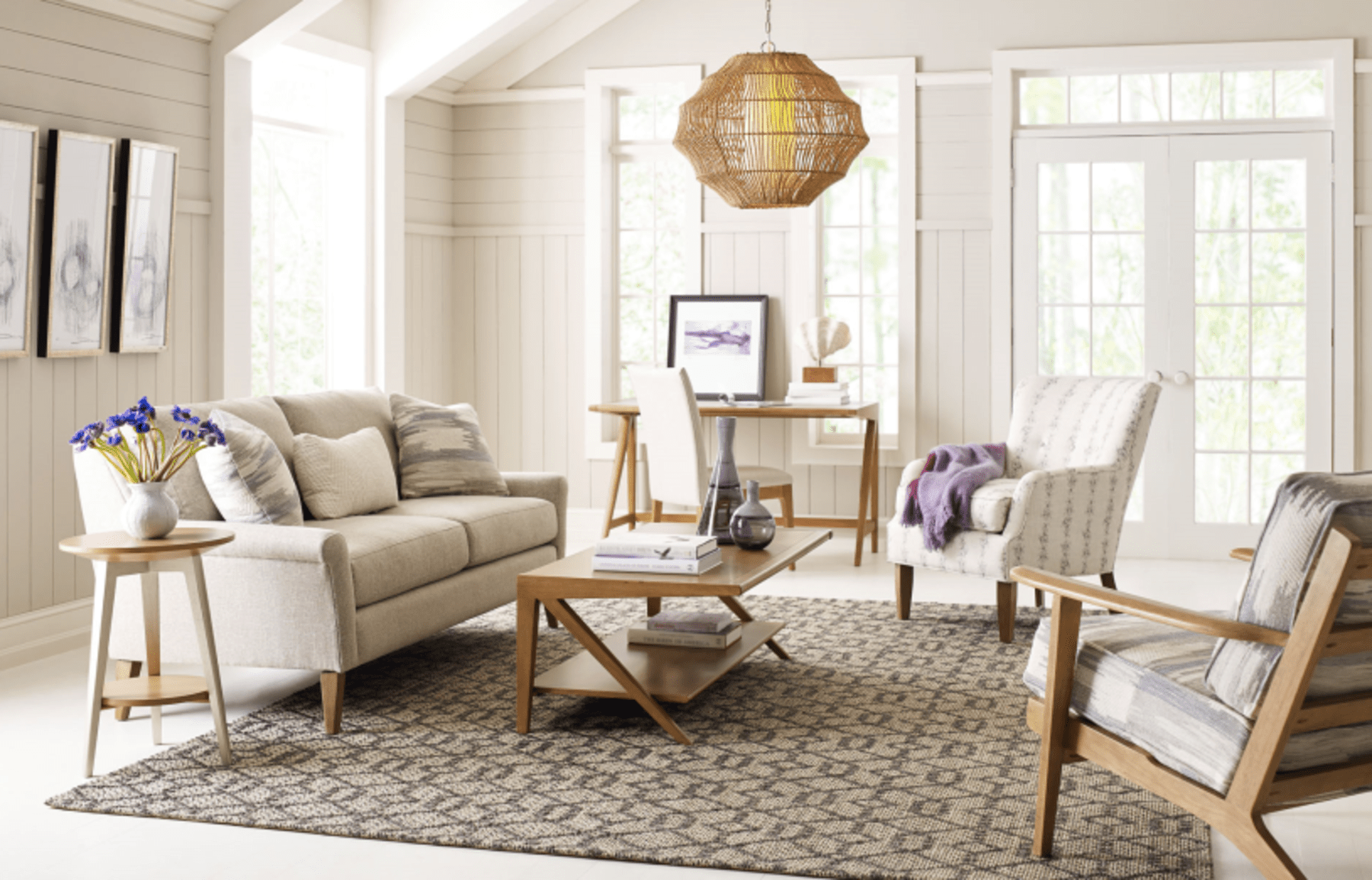The complexity of defining “what is art deco interior design” lies in its intricate combination of natural elements and modern aesthetics. This distinctive fusion often remains overshadowed by the captivating allure it presents. I aim to untangle its distinct design elements, shedding light on their impact on interiors and architecture worldwide.
Unraveling these traits aims to deepen our understanding and appreciation. It fosters a clearer comprehension of their depth and significance within the Art Deco.
What is Art Deco Interior Design?
Art Deco Interior Design embodies the luxury of the 20s, seamlessly merging into modern settings. Its allure lies in vibrant colors, bold geometric shapes, and intricate details. Spanning the ’20s to ’40s, it infuses spaces with timeless elegance, blending glamor, luxury, and precise symmetry through dynamic designs.
From lavish gilded accents to sumptuous materials, it channels an era synonymous with sophistication. Its striking patterns and vivid palettes create an ambiance that resonates even in today’s contemporary world, seamlessly merging nostalgia with modern style.

The Elements that Define Art Deco Interior
Art Deco interiors epitomize strength and boldness through their distinct characteristics. Geometric precision, angular forms, and linear embellishments define this style, void of unnecessary intricacies, presenting a robust and uncluttered aesthetic.
Central to its allure are its signature materials:
- Stainless Steel: Reflective and sleek, adding a modern touch.
- Mirrors & Chrome: Emphasizing glamor and sophistication.
- Glass: Amplifying elegance through transparency and light play.
- Lacquer: Infusing a glossy, luxe finish to surfaces.
- Inlaid Wood: Melding intricate patterns into furniture and decor.
- Exotic Skins (Shark, Zebra): Evoking exoticism and luxury.
- Ebony: Exuding richness and depth.
- Marble: Symbolizing luxury and refinement.
- Rare Woods: Embracing uniqueness and exclusivity.
The History Behind Art Deco Interior Design
Amidst post-World War I fatigue, a yearning for beauty and a departure from the mundane propelled the birth of the Art Deco movement. This desire for opulence permeated the spirits of both European and American societies, leading to a cultural renaissance that craved luxury and elegance.
- Rooted in the disillusionment following the war, this design emerged as a beacon of hope and glamor, steering away from the mundane and embracing the extraordinary.
- Its genesis unfolded globally, marked by its grand reveal at the French exposition in Paris, where it sparked a revolution against prevailing ornate design trends.
- The movement’s nascent stages were entrenched in fashion, gradually infiltrating furniture and architecture, signaling a seismic shift in design principles.
- The design gained prominence due to a unique blend of societal and architectural movements. It found a home in lavish spaces like the Waldorf Astoria, seamlessly integrating into the interior decorating services.
- The movement’s allure drew intellectuals and artists alike, captivated by its unique blend of luxurious aesthetics and innovative design, echoing the societal transformations of the era.
- The design embodied the mantra “Master of The Sky,” seeking to bridge the past with the future, imprinting sleek designs with opulent yet forward-thinking motifs.
- Skyscrapers adorned with these intricacies symbolized the harmonious merger of form and function, reshaping city skylines with elegance and innovative design philosophies.
- This movement became an emblem of cultural progression, encapsulating an era where design celebrated grandeur and practicality, leaving an indelible mark on architecture and societal perceptions.
Materials Define Art Deco Interior Design
The hallmark of Art Deco design lies in its use of sumptuous materials that epitomize glamor and extravagance. Gold, a symbol of luxury intertwined with the wealth spawned by burgeoning industries and technology, graced every facet of interiors and furnishings. Its luster reflected the era’s affluence.
Animal prints, such as shark, leopard, and zebra, adorned vibrant fabrics, while velvet, exuding luxury, was prominent in textile choices. Yet, the essentials went beyond fabric; stainless steel, chrome, glass, and mirror finishes became indispensable, embodying the era’s modernity.
For those aiming for a more lavish palette, marble, ebony, and zebrawood took center stage, radiating richness and sophistication. Every material shared a singular criterion: to exude luxury, free from any hint of dullness. Even as wood seemed secondary, rare dark-textured woods like walnuts found their place.
Modern Interpretations of Art Deco
In present-day interior design, this design is reimagined through a modern lens. Rather than mimicking exact replicas of the past, today’s designers embrace the essence and principles of the Deco movement. By integrating select elements and embodying its fundamental ethos, spaces resonate with the luxury and vibrancy reminiscent of the era.
Designs are custom-made and tailored to individual spaces, capturing the era’s essence without rigid replication. This modern approach cultivates spaces that radiate uniqueness, luxury, and distinctive character, echoing the allure of the bygone era in a contemporary setting.
Exploring Dominant Colors in Art Design
When delving into the color schemes prevalent during the classic era, Durand highlights, “Designs from the ’20s leaned into rich, jewel-tone palettes.” These vibrant colors found equilibrium alongside neutral tones such as beiges, creams, and subtly softened yellows.
In contemporary interpretations of this style, there’s a shift towards a more minimalist stance, although they still embrace elements of those vivid, striking colors. This evolution maintains a delicate balance between the generosity of the past and the streamlined, modern aesthetic preferences of the present, offering a nod to this design’s legacy while adapting to current design sensibilities.
What Are Art Deco’s Signature Motifs?
Art Deco’s motifs, characterized by boldness and symmetry, signified the era’s technological advancements across industries. Its design essence revolves around geometric precision, linear elements, and angular forms, devoid of fussiness or nostalgia.
When seeking designed-inspired pieces, look for these recurring motifs:
- Trapezoidal Shapes
- Zigzag and Chevron Patterns
- Stepped Forms
- Sweeping Curves
- Sunburst Shapes
- Triangular Shapes
- Stylized Wildlife
- Sensuous, Abstract Depictions of Nude Females
These motifs encapsulate the era’s innovation and elegance, still influencing modern design with their dynamic and progressive visual language.
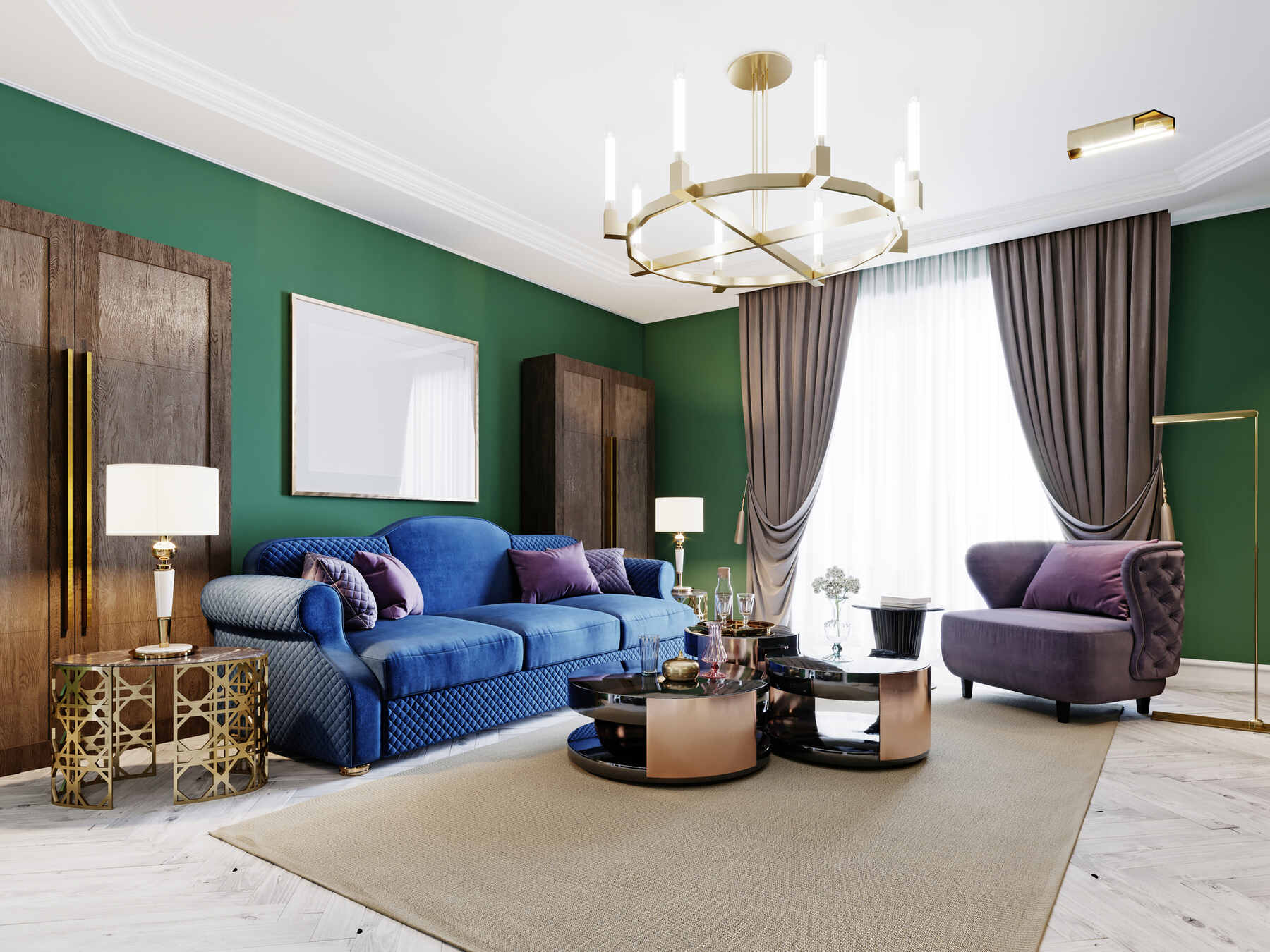
Transform Your Home with Art Deco Interiors
Delve into an expertly curated array of Art Deco elements to infuse your home with the captivating essence of this design, transporting your space back to the vibrant era of the roaring ’20s:
- Shape Streamlined Forms: Sculpt visually appealing shapes using plaster or POP, aligning them with Art Deco’s geometric aesthetics. Elevate these forms with opulent gold or chrome inlays for a striking visual impact.
- Embrace Animal Prints: Infuse upholstery with exotic allure, embracing zebra, shark, or leopard patterns reminiscent of the era. Seek dealers offering prints capturing the bygone era’s fascination, adorning armchairs and sofas for a bold touch.
- Elevate with Art Deco Accents: Enrich your space with statement art pieces—sophisticated coffee tables or striking sculptures—for a glamorous essence that defines this design.
- Integrate Geometric Shapes: Channel boldness by integrating chevron or herringbone patterns in flooring. Accentuate borders with geometric designs, adding depth and sophistication to your space.
- Illuminate with Glamorous Lighting: Illuminate spaces with decadent fixtures echoing the dazzling ’20s. Opt for decorative chandeliers exuding luxury, living room furniture layouts or dining areas.
- Opt for Sleek Materials: Embrace lustrous materials like stainless steel and chrome, reflecting the era’s picturesque beauty and infusing interiors with glossy allure.
- Incorporate Sunburst Motifs: Symbolize new beginnings by incorporating sunburst designs on ceilings or as decorative elements, echoing the movement’s innovation narrative.
- Amplify with Statement Mirrors: Enhance vibes with sizable mirrors featuring intricate gold geometric borders. Add depth and complement décor, lending understated sophistication.
- Infuse Over-the-Top Glamour: Layer on glitz and luxury! Incorporate inlay work, chrome-based lamps, or sumptuous velvets for an extravagant ambiance radiating opulence.
- Blend with Antiques: Fearlessly blends elements with existing furniture, creating an eclectic mix that reflects the movement’s rebellious spirit, crafting captivating novelties.
By thoughtfully incorporating these elements, curate a space harmonizing luxury, sophistication, and vibrancy, breathing new life into your modern home.
Related Questions
What Are Popular Art Deco Furniture Pieces?
Some popular Art Deco furniture pieces include streamlined chairs, geometrically patterned tables, and luxurious cabinets characterized by sleek lines and bold design.
What Are Popular Art Deco Accessories?
Essential accents include geometric vases in glass or ceramic, stylized figurines in bronze or chrome, metal or glass lamps with geometric or stylized designs, mirrors displaying geometric shapes and vibrant colors using metal or wood, and clocks featuring geometric patterns and colorful touches in metal or glass.
What Are the Examples of Famous Art Deco Architecture?
This architecture includes the Chrysler Building with its stainless steel spire, the limestone-clad Empire State Building boasting an observation deck, the Rockefeller Center adorned with limestone structures and sculptures, the Radio City Music Hall showcasing gold leaf details and murals, and the diverse collections of buildings in Miami Beach District.
Conclusion
Let Art Deco elevate your space. Blend opulent materials, bold geometry, and vibrant hues for a sophisticated fusion. Harmonize nostalgia with modernity, crafting spaces that echo the allure of a bygone era.

